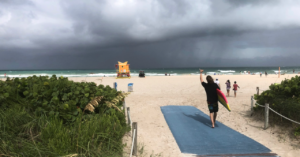
You see a dry cleaners, I see a gelato shop in San Diego (yes, really)
Lately the cancer research space is abuzz with the promise of several novel therapeutic approaches, each touted as the next speculation akin to gold panning or tulip mania in centuries past.
As the field rapidly expands, a couple of nagging questions emerge:
- Can the market truly support the sheer volume of agents now in development?
- What does success in this particular niche actually look like?
The issue extends far beyond the usual breathless hype and headlines. The reality is many smaller biotechs are on a collision course with a ‘day of reckoning’, as the large pharma players inevitably shift their focus either to snapping up the cream of the crop and through their resources as clinical development or seek fresher opportunities. The unforgiving nature of this ecosystem is nothing new, of course. Yet the current scale of the current pipeline frenzy is truly staggering.
Amidst this frenetic activity, however, glimpses of genuine innovation manage to cut through the noise. The latest dataset from the AACR annual meeting provides a window into some of the more novel strategies taking shape in early stage research. While the hype around certain candidates may be getting ahead of the data, the insights reveal both the promise and potential pitfalls of this highly competitive therapeutic landscape.
As the field continues to evolve at a breakneck pace, discerning fact from fiction will be essential. Mere incremental advances will struggle to capture and hold attention for the long run and, more importantly, investment in an environment hungry for promising agents to fill aging pipelines with gaps coming up thanks to loss of exclusivity.
The thing is, it’s easy to forget only the most compelling, well-differentiated approaches will be poised to navigate this tricky terrain successfully…
To learn more from our latest oncology expert interview and get a heads up on key cancer research insights, subscribers can log-in or you can click to gain access to BSB Premium Content.
This content is restricted to subscribers
 We’re at the time of year where we can cheerfully draw on numerous lessons learned from preclinical research and start applying them to the clinic.
We’re at the time of year where we can cheerfully draw on numerous lessons learned from preclinical research and start applying them to the clinic.

 Every now and then what seems like one player out in left field for the longest time suddenly balloons into a whole new class or niche of agents.
Every now and then what seems like one player out in left field for the longest time suddenly balloons into a whole new class or niche of agents.






